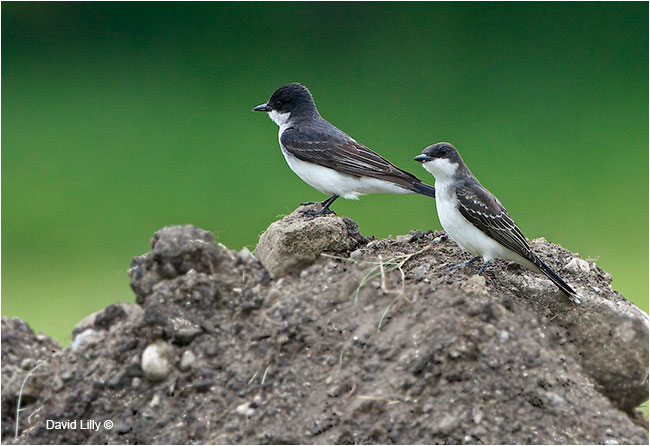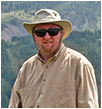
Birds of a Feather Flock Togetherby David Lilly
Birds of a feather flock togetherWe have all heard the old saying “Birds of a feather flock together”. The question is why do birds flock together? There are a lot of theories and studies done on this interesting subject. Some are obvious, such as Geese in “V” formations, makes it more energy efficient to follow in the shadow of another bird. However, it is still speculative as to why birds flock together during migration and then split off into pairs for breeding, then back to flocks.
Flock of Sandpipers Territoriality:Birds migrate together. However, when they reach their nesting grounds birds stake out territory and break away from the flock and mate. It is believed that the testosterone levels increase during mating season and thus making them territorial only for the mating season. When mating season is over, the testosterone drops and the birds once againt get together into flocks. During mating season birds need a certain amount of territory for food, this may explain why they are territorial for mating or like us humans we want to protect the females.
Two Western Kingbirds (Tyrannus verticalis) chase off a Swainson's Hawk ( Buteo swaisoni) Siblings:When young birds stay together it makes it easier for the parens to feed, protect and train them. In flocks the siblings learn about migration, how to forge for food and how to survive.
Goslings line up in a row behind one of their parents (Branta canadensis) Foraging:In the winter birds help each other by staying together in flocks this helps them find food and stay warm.
Tundra swans (Cygnus columbianus) and Northern Pintail ducks (Anas acuta) gather in ponds during migration Safety in Numbers:With many birds in a flock, their are more eyes for seeing predators and sounding the alarm. Flocks of birds sometimes mob intruders or other predatory birds. Magpies and crows are famous for this. Geese are famous for always having a couple of birds in the flock on the lookout, thus allowing the members of the flock to eat and be safe. Individuals in the centre of a flock may be less likely to be attacked. On the flip side, clustering may actually increase the likelihood of a predator noticing them. In mixed flocks, chickadees and titmice often function as sentinels or lookouts, and their alarm calls are recognized by other species in the flock.
Coyote stalking ducks and geese
Flock of Sandpipers Scoping out Nesting Sites and Mates :Flocks make it easier for birds to find a mate.
Eastern Kingbirds (Tyrannus tyrannus) Roosting:Usually birds that flock together roost together. In the winter this can make it easier to survive the long winter nights by helping each other to stay warm.
Migration:
Travelling in flocks makes the long flights of migrating birds more efficient. This evident with Geese during migration with their magnificent ”V” formations. In the spring we see this among the Tundra and Trumpeter Swans. It also provides safety in numbers for a perilous journey. Also, flocks make it easier to find food and again makes it safer for the long migration.
See David's other Bird Photography articles on the Canadian Nature photographer
[ Top ]
|









